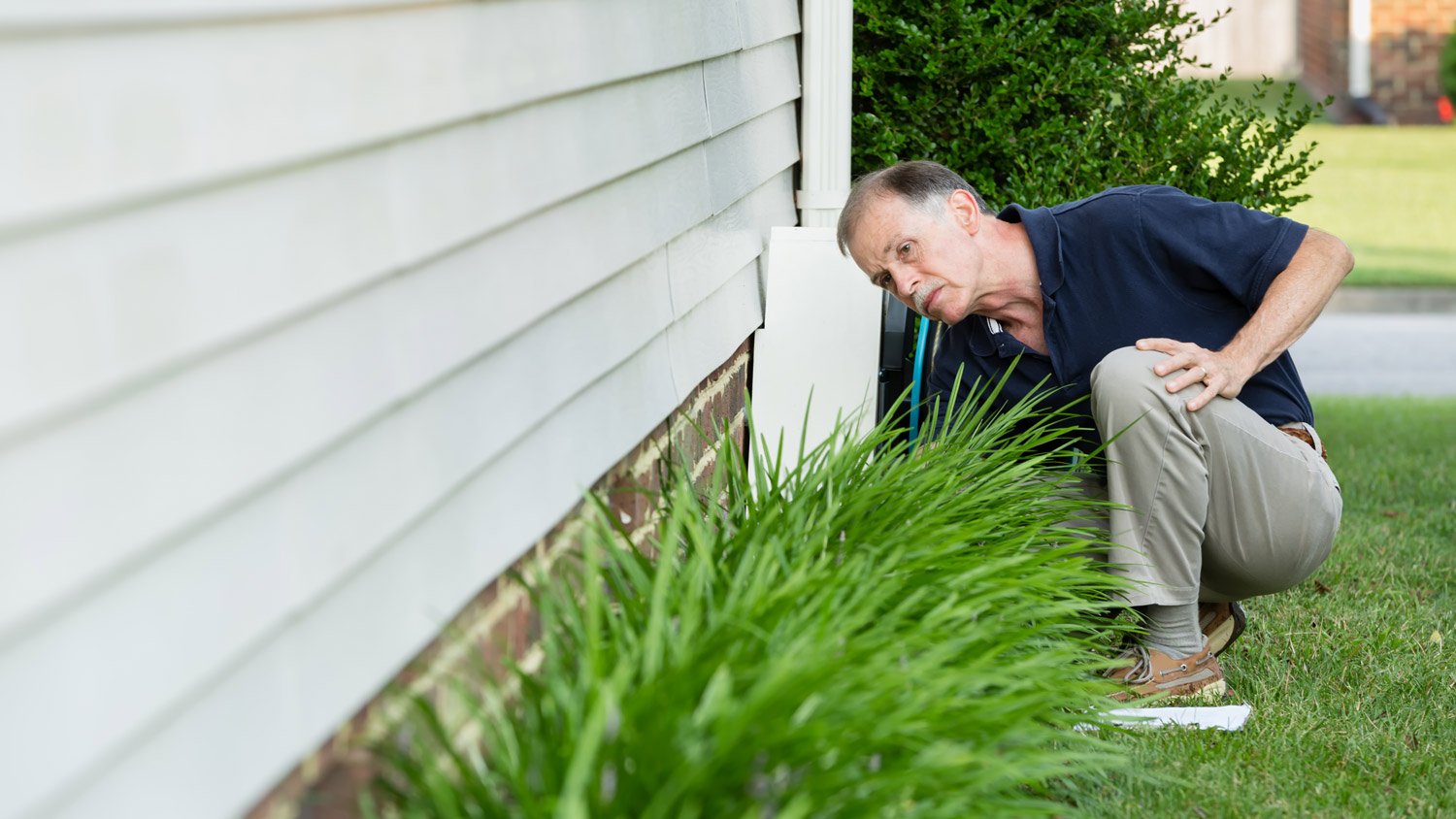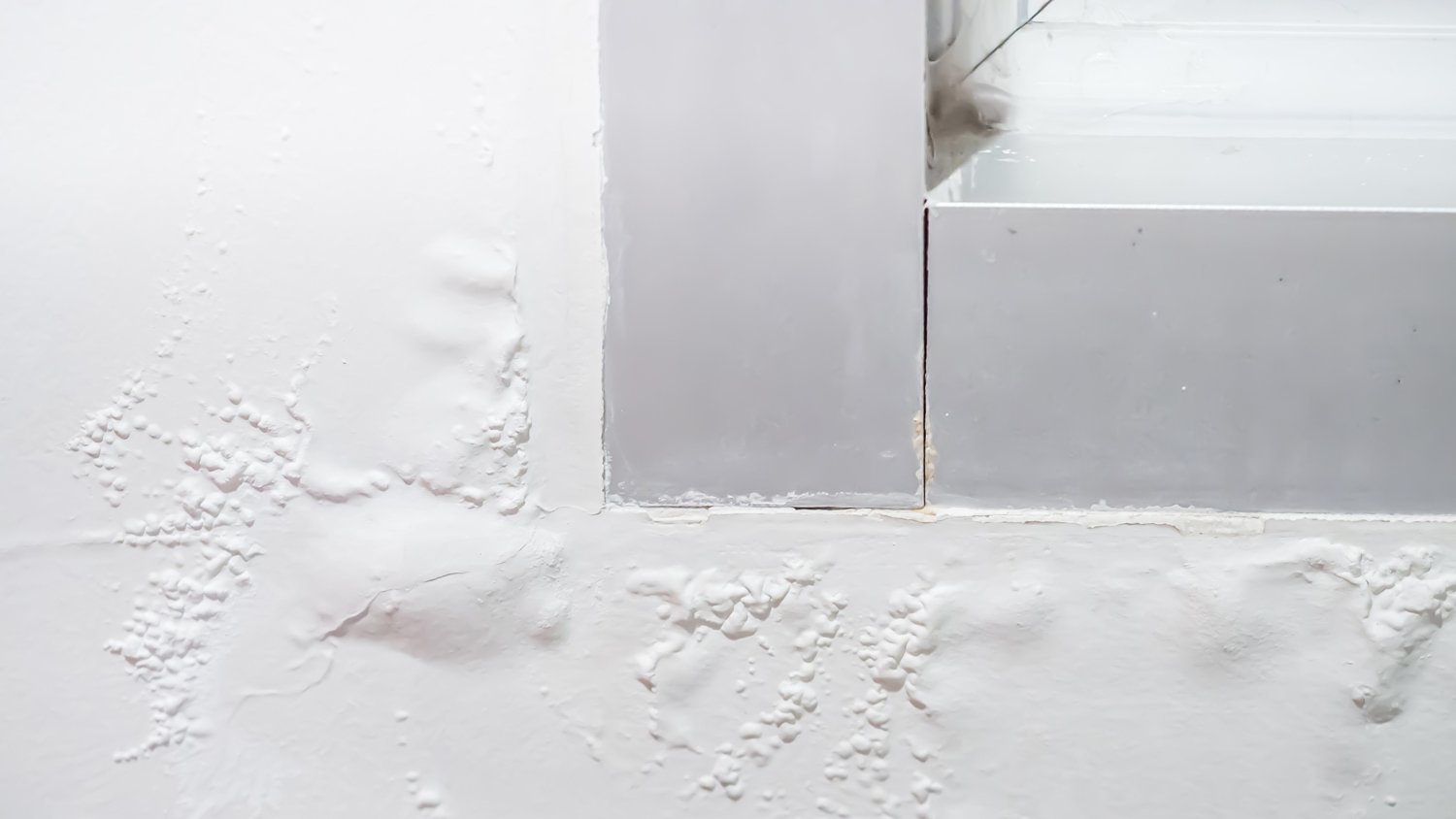
Looking to remove load-bearing walls and vertical supports to open up your living space? Learn about what affects the cost to install an LVL beam.
Don’t let your house crumble


Some of the most common signs of damage include cracks in the foundation, walls, and chimney, as well as doors and windows that don’t open properly.
Frequent inspections can prevent signs from going unnoticed.
Many warning signs of house collapse are initially caused by termite infestations.
Hiring a structural engineer to inspect your house is the first step in solving these issues.
Having a home should give you the feeling of comfort and safety. But, of course, homes are susceptible to damages that you should be aware of and on the lookout for. Whether it’s the house you’ve lived in for years or one you’re moving into, it’s important to know the warning signs that a house will collapse, so you can take the necessary precautions to protect yourself, your family, and your belongings.
Recognizing early warning signs is important, but figuring out the right fix isn't always simple. Delaying professional help or attempting complex DIY repairs can lead to further damage and increased costs. With our network of local pros, you can hire a skilled professional to assess the issue and recommend the best solution.
Houses shift and settle over the years, but some signs may be serious enough that you need to take action. Ignoring signs that your house has structural issues that can lead to collapse can jeopardize your safety and your biggest investment. Structural problems will only get worse over time, so ignoring warning signs while issues can still be fixed can result in prohibitively expensive repairs or even the loss of your home.
Having a home means getting used to the everyday creaks and quirks you encounter, but some of those quirks are actually cause for serious concern. Knowing which warning signs should be investigated can help you identify problems before your house is at risk of collapse.
Some warning signs of structural damage in your home include curving interior walls, horizontal cracks in the foundation, and sagging floors or roofs. Calling in a structural engineer to take a look as soon as you notice these signs can save you from a bigger problem later on.
Some houses are more susceptible to dampness in their crawl space or basement. If you live in a rainy area, you may be used to the dampness and know when to determine if it is a major issue. However, a damp basement or crawl space can be one of the signs that a house will collapse. The longer a crawl space or basement is damp, the more likely it is to cause bigger issues—such as rotting wood— that can lead to your house collapsing.

Mushy soil around your house could just mean it’s springtime and the ground is thawing, or even that there’s a landscaping issue. But, the more sinister culprit is prolonged water leakage in your house that is causing it to sink into the surrounding soil. If the earth around your house is feeling more squishy than usual, it could be a warning sign that your foundation is sinking and your house is on the verge of collapsing.
If your walls look warped, it’s not an illusion—it could be a sign that your house is on the verge of collapsing. Warped walls occur when drywall has absorbed water and swells. You can usually tell by looking at your walls if they’re warped, but you can also try laying your hands flat on them to be sure. If it feels uneven when you touch it, you may want to have a structural engineer do a home inspection to help you devise a plan to manage this issue.
Peeling paint on your bathroom wall may be something you shrug off as a less-than-stellar paint job. But, it could be a sign that a house will collapse, and it should be dealt with immediately. Peeling paint is usually a sign of an ongoing moisture issue, which can quickly lead to mold and rotting wood, and cause a house to collapse.
Cracks in your chimney can be a serious problem. While noticing cracks on the ground level might be intuitive, it’s easy to let the top of your house slip your mind. If your chimney has cracks in it or is beginning to separate from the house, this indicates a serious problem with your foundation.

If you’ve ever blown bubbles and promptly popped them, you can attest to how satisfying and downright fun it is. However, if the paint on your walls starts to bubble, it’s not quite as much fun. Bubbling paint looks exactly how it sounds: the paint bubbles, you poke the bubbles, and the plaster breaks and crumbles. This bubbling could be a sign that a house will collapse, and it could be from a variety of underlying issues, such as water damage or pest infestation.
If there’s one thing that’s certain about pests, it’s that they will pester you. And in this case, they’ll pester your home, too. Termites eat away at wood frames, concrete, and your floors. A termite infestation could be a sign that your house might collapse soon. When dealing with an infestation, it’s important to know the amount of damage done by the termites, as it will help determine the next steps you need to take to protect your house.
Unless you have a trampoline under your house, your floors shouldn’t feel bouncy. If you notice a bouncy feeling or your floors are squeaking when you walk on them, it could be due to severe termite damage—in other words, termites are eating through your floorboards. This can quickly lead to a house collapsing, so you want to get it checked out immediately. In some cases, hiring a pest control company can fix the issue. But, depending on the damage, you may need to take more serious measures.
If the doors in your house are acting up, take a closer look at the frames and see if they look bent or uneven. You’ll also want to check if there are diagonal cracks at the top corners of the door frames while you’re at it. A bent or uneven door frame could indicate foundational issues, meaning your home’s foundation could be shifting and increasing the risk of a house collapse.
If you’re all caught up on your bathroom cleaning chores, but still seem to be smelling something—like a damp, musty smell—it’s probably your toilet. Once you determine that the odor isn’t due to a poor cleaning job, you need to test this warning sign by holding onto your toilet with one hand on each side and see if it rocks under your grip. If it does rock, it’s highly likely that water is leaking from under the toilet and causing foundation damage.
Discoloration under either the interior or exterior walls under your windows is a red flag, and could mean that your home is in need of more help than just a touch-up paint job. A water stain indicates some serious water damage. Stains under your windows mean that water is somehow getting into the location where the windows and construction of the house meet.
Over time a house settles, which leads to small changes, like how a door fits in a frame. If you notice that the doors and windows in your home aren’t opening properly, the issue is more likely due to foundation problems versus the house settling. This warning sign means that your home’s foundation has lost the strength to hold the house up. A structural engineer can inspect your foundation and alert you to any serious problems.
It’s easy to look past your concrete as you go on living in your house. But, it’s a crucial part of your home’s foundation and if it’s damaged, your home is at risk of collapsing. In most homes, concrete is held up by steel bars or rods. When the steel starts to deteriorate, the concrete may start crumbling or cracking along with it. Whether outside, in your attic, or basement, check to see if the steel bars holding up the concrete are corroding. This could cause the cracking concrete and is a sign of structural damage.
Issues with baseboards might not be noticeable at first. In fact, you may have to bump into them and jostle them to truly see if anything is happening. If your baseboards are separating in pieces, or falling off the walls, this is a sign that a house will collapse. Issues with baseboards indicate that you have a structural issue that needs to be addressed.
While a damp smell is probably top of mind in signs of foundation issues, the scent of gunpowder might not pop into your head—or nose. A gunpowder scent could come from a fried circuit board, frayed wires, or a broken furnace fan motor. It’s important to identify and deal with this issue ASAP, as it could pose a fire risk.
If you see any one of these warning signs, you should act fast to prevent further issues in your home and keep you and your family safe. The specific next steps you will need to take will vary depending on the root cause of your issue. For example, exterminating termites isn’t the same issue as replacing a furnace. Water leaks caught early can likely be handled by a plumber, but foundation issues mean you should hire a structural engineer.
That being said, when you see any of these signs, it’s a good idea to contact a professional. Having a structural engineer inspect your home is important to correctly diagnose the problem and decide the best course of action. The cost to hire a structural engineer depends on the type of work you need. You can find a structural engineer near you who best meets the needs of your home and budget.
Preventing the structural issues that lead to a collapsing house will save you the cost, stress, and risk of danger these problems can cause. To help prevent your house from collapsing:
Have an annual termite inspection and take steps to prevent a termite infestation.
Frequently visually inspect your basement or crawl space for moisture, cracks, and other damage.
Have your roof and chimney inspected every year to identify existing or potential problems.
Promptly repair any leaks or plumbing problems.
The cost to fix structural issues depends on the type and extent of the problem. Foundation repair can cost as little as $300 to repair minor cracks or as much as $25,000 or more to have your foundation lifted and replaced. The cost to repair your roof can range between $150 for minor damage to more than $8,000 for extensive repairs like replacing trusses. Repairing water damage can cost between $1,350 and $6,250 on average, although more extensive damage will carry a higher price tag.
From average costs to expert advice, get all the answers you need to get your job done.

Looking to remove load-bearing walls and vertical supports to open up your living space? Learn about what affects the cost to install an LVL beam.

A new steel I-beam is more durable than a wooden one. Learn what factors can affect steel I-beam installation costs and how to budget for this project.

A damaged main support beam can cause serious structural damage to your house. Learn how much it costs to replace a main house support beam.

Do you have a load-bearing wall standing between you and your projects that you want to remove? Learn about the cost of removing a load-bearing wall.

Structural steel and wood beams ensure your house is structurally sound. Learn the difference between steel and wood beams and how to choose the right one.

Removing columns can open up a space, but you’ll need to exercise caution to avoid damaging your home’s structure. Use these steps to find out if your column is load-bearing.